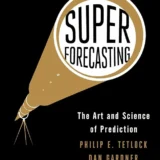
Fifty years ago today science fiction fans tuned in to watch Colonel Steve Austin boing boing boing his way into the sci-fi zeitgeist as The Six Million Dollar Man. The intro (1) was thrilling, and the premise was exciting. A man…barely alive made faster, stronger, better than he was before. How could you not love it? The pilot aired on March 7th, 1973, and whetted enough appetites to get two more pilot episodes in ’73 and a five-year run from 1974-78,
Oh, the writing? Well, yeah, there’s that. Still, it was in step with the times, and not all that far from the original source material, Martin Caidin’s 1973 novel Cyborg, which opened with the same crash of the M2-F2 lifting body, piloted by engineer/test pilot Bruce Peterson. It’s amazing that Peterson didn’t lose any limbs in the crash. In fact, he only lost one eye…and that was due to an infection in the hospital (2). I recently pulled my copy of Cyborg off the shelf and found it still pretty readable. Dated to be sure, but fun just the same.
Besides the man-to-superman premise, and despite scripts that were cheesy even then and painful now, The Six Million Dollar Man had great casting with a tremendously likable lead in Lee Majors as Col. Steve Austin, a great spook (Oscar Goldman, played by Richard Anderson), and Rudy Wells ( Martin E. Brooks) as the compassionate doctor/bio-engineer.
Was the science unbelievable? Sure, even twelve-year-olds could figure out that the stresses from the bionic limbs would make hamburger out of the rest of Steve’s body, but like so many things in sci-fi, we can overlook that stuff for the fun of it. While most of us wouldn’t want to give up our original parts, no matter how good the upgrade, Steve Austin was a more realistic superhero than any alien, mutant, or special formula hero despite the casual disregard for physics. Besides, the special effects were fun. No child who grew up watching Steve run in slow motion to the sound of electronic sound effects could keep from hearing that noise when they ran. Whether consciously or not, every movie that uses slow motion to describe hyper-speed, like Bullet-Time in the Matrix, owes a debt to the bionic man.
The two questions everyone asks about the show are how much would that be in today’s money, which Cozi TV pegs at “around 23 Billion (3), though I’m not at all sure that makes any more sense than Steve’s powers, and secondly, how close are we to having the technology today? From the standpoint of powered prosthetics, the answer is obviously pretty close, but the real question lies in the brain-machine connection.
Fortunately, there’s someone we can ask about that. Neuroscientist Robert Hampson, who’s also the author of The Moon and the Desert, which I featured in my Science Fiction to Look for Column this month. Hampson’s novel, which is named ag the first episode of the TV series, revisits the premise of rebuilding a human, this time an astronaut on the moon, set in the near future. Hampsen does a fine job of putting together all the pieces. He also makes some good points about the relationship between bionics and exoskeletons and tops it off with a solid medical mystery in space.
According to Dr. Hamsen, we’re already there, “Researchers at Caltech and the University of Pittsburgh have already had success with two-way way neutral interfaces… ones that record and stimulate… providing movement and touch sensation. The science is here now. It just needs to be refined and scaled up.”
Gentlemen, we have the technology.
References:
- The Six Million Dollar Man Intro – 1973, Youtube, https://www.youtube.com/watch?v=cRgqouS1O6E
- Bruce Peterson. (2023, January 23). Wikipedia. https://en.wikipedia.org/wiki/Bruce_Peterson
- The Six Million Dollar Man, Cozi TV, https://www.cozitv.com/shows/the-six-million-dollar-man
Read my Profile









